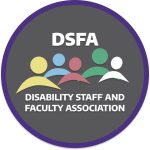Home / Stories /
 The COVID-19 pandemic has left a lasting impact worldwide, reshaping our daily lives and creating a natural experiment in the realm of adolescent brain development. Researchers at the Institute for Learning and Brain Sciences at the University of Washington uncovered significant insights into how pandemic-induced stressors have prematurely accelerated brain maturation in teenagers.
The COVID-19 pandemic has left a lasting impact worldwide, reshaping our daily lives and creating a natural experiment in the realm of adolescent brain development. Researchers at the Institute for Learning and Brain Sciences at the University of Washington uncovered significant insights into how pandemic-induced stressors have prematurely accelerated brain maturation in teenagers.
Dr. Patricia Kuhl, a UW Professor, led the study, using advanced brain imaging techniques (MRI), to examine the brains of adolescents aged 9 to 20 before and after the onset of the pandemic. The focus was on cortical thickness, a key indicator affected by heightened stress levels. Cortical thickness typically decreases during adolescence, but the researchers discovered an abnormal reduction in widespread areas of the brain post-pandemic.
The study revealed that the impact of this accelerated brain maturation was more pronounced in females than males. The abnormal thinning of the brain’s cortical surface, usually associated with chronic stress and trauma, prompted questions about the underlying causes. Social isolation and the anxiety induced by lockdowns, especially affecting females, were identified as potential contributors.
Dr. Neva Corrigan, a research scientist in Dr. Kuhl’s laboratory employed machine learning tools from a Data Science class to model the effects of COVID lockdown restrictions on adolescent brain development. Bayesian regression normative modeling was used for the analysis and the collaboration also involved Dr. Ariel Rokem, emphasizing the importance of cross-disciplinary teamwork in addressing complex issues.
The study aligns with broader research trends showing a decline in adolescent mental health even before the pandemic. The disruption caused by COVID-19 highlighted these challenges, raising questions about the resilience of adolescent brains in the face of unprecedented stressors. Insights from this research not only contribute to our understanding of the pandemic’s psychological toll but also underscore the importance of support systems, particularly schools, in safeguarding the mental well-being of teenagers.
As researchers continue to analyze the wealth of data collected, including social media use, cognitive measures, and surveys on well-being, the study holds promise for uncovering deeper insights. By understanding the predisposing factors and potential protective mechanisms within adolescent brains, the research aims to inform interventions for youth mental health. The Institute for Learning and Brain Sciences’ pioneering research provides a critical lens through which we can understand the intricate relationship between external stressors, brain development, and adolescent mental health. As the scientific community examines the long-term impact of the COVID-19 pandemic, studies like these become invaluable in shaping our approach to promoting the well-being of the younger generation.
Read more on the UW Institute for Learning and Brain Sciences website.



